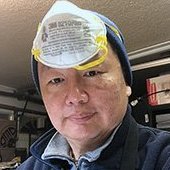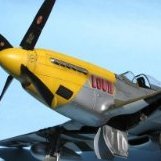Search the Community
Showing results for tags 'WWII'.
-
Greetings fellow modelers: This was one of the most enjoyable projects I've done. The Kotare Spitfire Mk.Ia "Brian Lane" kit is fantastic. The Kotare team certainly put a lot of effort into creating a wonderful build experience for the modeler. And they pulled it off. In this brief, ready-for-inspection summary I'll share my build overview, my thoughts on the kit and some recommendations for future kit builders as I go through the photos. Here's a link to the build: Ok, here's my rendition of QV-K P9386 from September 1940. The quality of the molding, engineering, decals, and thoroughness and thoughtfulness of the 24-page instruction book really made this project a pleasure. I built the kit completely out of the box with the exception of Eduard masks for the canopy. Kotare's design philosophy made for a superb assembly process. Each main engine panel was molded as an individual part -- no seam lines or glue clean up. The fuselage aft section parts all intersect at panel line joins. The wing fairings are each single molded parts that fit perfectly. It's designed so that one can assemble the entire plane almost without a single seam line that intersects a rivet line or panel line. What a pleasure. The only area where this occurs is underneath the aft section of the fuselage -- conveniently away from normal viewing. I can't think of a single situation where the fit was not PERFECT. For example, there is only one way to install the landing gear struts. Full stop. There's no play, no wiggle, no uncertainty. One of the best designs I've seen. The horizontal stabilizers are one piece and there's only one way to install it for a nice, tight fit in perfect alignment. The prop assembly installs by literally fitting a square peg in a round hole for a perfect fit. Another nice treat is that the rudder and elevators are positioned off-center and match the positions of the control stick and rudder pedals in the cockpit. I haven't seen that before. That's just one of the many nice details and surprises discovered as one works through the build. Even the trim tabs are offset slightly. As for painting, the instructions provide extremely helpful guides for painting the cockpit as well as the exterior. For the cockpit, painting call outs are provided during the build steps and there are also summary diagrams with multiple views in full color. For the exterior, four full color views are provided for the aircraft with color call outs and key points. I used Mr. Color lacquers for the main camo colors (C361 for Dark Green and C369 for Dark Earth) and MRP Marking Yellow for the spinner. I mixed by own version of Sky Blue for the underside using Mr Color White, RLM 76 and Sky Blue. Since I wanted to emphasize color variation across the different subassemblies as the instructions pointed out, I painted some of the panels a little darker or lighter or a slightly different shade of green or brown. For example the fabric covered sections are a little more faded than the metal sections. I used the kit decals by Cartograf, which were fabulous -- perfect color, perfect register, nice and thin, no excess carrier film. All good. The main challenge with the decals was getting them to settle over the raised rivet areas on the aft part of the fuselage. It took several days of bubble popping and decal solution application to get them to finally behave around the rivets but they got there. I planned out the weathering process at the start of the project. My goal was to reflect what I saw in the reference photos -- and there are multiple clear photos of P9386 as well as several other Spitfires that are very helpful. One of the photos of a real spitfire elevator section has a humorous caption highlighting that there's no evidence of preshading on the fabric area. After priming with Mr Finishing Surfacer 1500, I painted the wing roots MC201 Super Fine Silver, then applied AK worn effects fluid over the silver areas. I pre-shaded the panel lines in black and then applied heavy marbling using spatter templates and random airbrush patterns to break up the solid panel colors. After the main camo painting, I dabbed the wing root areas with a wet brush to get the chipping effect I was after. Next was a gloss coat to seal in the chipping and prep for decals. After the decals and flat coat, I augmented the chipped wing roots with a sharp silver Prismacolor pencil to add some scratches and make some of the chipped areas "less round" and more random looking. The exhausts each are molded in top and bottom halves. There's a nice close up photo in the instructions showing the weld seams that can be replicated when you glue the exhausts together and let some glue squeeze out of the seams. I needed to add a little material to the tips of the exhausts to get the proper shape and I used my motor tool to drill out the exhaust interiors. I used reference photos for guidance on painting the exhausts. I started with gloss black and then applied a 1:1 mix of Mr Color Metallic Black and Super Stainless. After the decals were applied on the lower side of the manifolds, I used Tamiya acrylics to achieve the exhaust gas/heat color pattern. Black, purple, brown, orange, and deck tan were used. The cockpit detail that comes with the kit is astounding in my view. The instrument panel dials all have individual decals and there are placards all over the place - sidewalls, compass, gunsight, etc. Also, in the photo above, the molded seatbelt harness is visible, which I think looks pretty good. The figure of Brian Lane was a nice bonus and here's my attempt at painting him. There's a nice painting guide in the instructions. Overall Summary of the kit: Highlights Clear, detailed, comprehensive instructions. I may keep the book as a reference for other builds. Excellent. Design and fit for easy assembly and minimal clean up. Decals by Cartograf - cockpit decals and placards as well as the main markings and stencils Brian Lane figure - Colorful RAF pilot uniforms are great subjects. Aircraft interior and exterior color profiles in the instructions Surface detail - stressed skin effect around some fasteners, rivets, panel fasteners, hinges -- all good. Fine and consistent panel lines Landing gear design - "weighted" wheels with flat spots and slight bulges. Things to look out for (for future builders) My copy had some very slight molding sink marks on the tops of the wings above the wheel wells. Easy clean up. The exhaust manifold tips needed some extra filler material (CA glue). Again, easy clean up. The molded seatbelt harness is fairly thick in the section between the seat top and the armor plate slot. I thinned the seatbelt quite a bit by scraping underneath and cleaning up. Another option is an aftermarket seatbelt as the kit provides a seat without the molded seatbelt. Some of the molded detail needed a little sprucing up. Nothing major. Thanks for looking. Needless to say, I highly recommend this kit. Comments and critiques are more than welcome. - Jim Jenson
- 23 replies
-
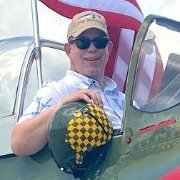
*** 1/32 Kotare Spitfire Mk.Ia "Brian Lane" COMPLETE ***
Hoss FL posted a topic in Works in Progress
Well, I'm back to 1/32 after a few armor projects and several 1/48 kits. I picked this kit up this summer and am really looking forward to the build. The plan is to build it completely out of the box with no aftermarket and I think the kit has all the detail needed for an excellent rendition of this bird. This is the one marking option, but the subject is very well researched. The instructions are very detailed with photos and historical tidbits. A fun build experience so far. I just got started on the cockpit and will post updates along the way.- 87 replies
-
- wwii
- brian lane
-
(and 4 more)
Tagged with:
-
… in Ukraine. HERE Just to put history (and reality) back in perspective Cheers, Quang
- 22 replies
-
- wwii
- hawker hurricane
-
(and 3 more)
Tagged with:
-
Greetings fellow modelers: After building a few 1/48 scale kits, I'm back to take a crack at another 1/32 Dora. I've decided on White 12, Wk Nr. 500408 from 5./JG 301. Here's some nice artwork from IBG's new 1/72 release. I tend to gravitate to the Mimetall camo schemes for some reason. I'll be using the Hasegawa ST-19 kit with a number of aftermarket items for the build. The aftermarket goodies include: Aires cockpit upgrade HGW riveting set Eagle cals #32-61 HGW seatbelts Yahu instrument panel One man army stencils Synthetic ordnance works landing gear Quickboost Exhaust Eduard canopy masks Quickboost gun barrels Master metal gun barrels Barracuda wheels Eduard exterior detail set I wanted to use a Henri Daehne spinner and prop kit, but unfortunately Henri has shut down his shop in Germany for good due to the economic situation. I'll have to make do with the kit prop and spinner. Mr. Color lacquers along with Tamiya acrylics will be the main paints used. Here are some photos of the front office, which is now complete. I've also completed the engine plug with some extra plumbing and wiring. Starting on next steps to close up the fuselage. Thanks for looking. Comments and critiques are always welcome.
-
Hello Everyone, I have been quietly puttering away on the superb little IBG P.11C. The fit, engineering, and detail is amazing. The only aftermarket I've gotten is the BitsKreig spinner, propellors, and headrest, Yahu IP, and a set of Techmod decals, which I might use as inspiration to create a set of masks. I painted everything so far with Tamiya AS-12, weathered with Tamiya panel liners and Flory Washes, and annealed the lap belts. And no, this is not a distraction from my Lancaster build, which I am also working on! Cheers, Tom In both of these photos you can see the kit spinner base on the left, the BitsKreig part on the right.
-
Hi there! We've got a special offer for you! www.ProperPlane.com
-
- proper plane
- proper bag
-
(and 2 more)
Tagged with:
-
G'day everyone. Here's my rendition of ICM's I-153. Very nice build. Good detail, nice fit, but their soft, flexible plastic made for interesting alignment of the long thin wings. It's built almost out of the box, eduard etched seatbelts (I wasnt a fan, and will stick to HGWs belts in the future), and Quickboost exhausts. Painted with MRP paints and rigged with EZline. Denzil
- 19 replies
-
- icm
- polikarpov
-
(and 5 more)
Tagged with:
-
Gday everyone, longtime lurker first time (in-progress) poster. I'm using an old photo bucket account for my pictures but am considering different options in the future depending on how the pics look on here. Input and comments welcome. Anyway, the build. Revell's 190s. Fantastic bang for the buck, y'all know what to expect. This one is an OOTB to break in a new airbrush, new paints and some new surface detailing techniques. Some more successfully than others. Construction is fine, plenty of mold lines to clean off, but overall very nice fit. Construction progressed smoothly. And onto the main event. Black primer over everything. Plenty of flaws, but this one has no ambitions of being a contest winner. I've drawn on rivet lines and carved out a stressed skin look, to break up the shiny smooth surfaces. Alclad airframe aluminium down over areas to be chipped later Next up, some fancy MRP paints! Thanks for reading. D
-
To simulate the authentic visual expression of the natural metal finishing painted P-47D is the goal of this build. I've collected hundreds of late WWII pictures and the restored and still flying P-47D. Here are a few examples that I'm following: This build started with the Hasegawa kit, with limited recessed panel line and the rivets only visible along these panel lines. I've decided to proceed with manually riveting. The Line Drawing was downloaded from theblueprints.com https://www.the-blueprints.com/search/p-47d/ It's my first time of using this set purchased from eBay.com. Unexpected challenges and mistakes were inevitable. Right after the riveting, I'd like to try the metallic brush texture commonly seen on the NMF airplanes. I've applied 1) Alclad II Black Base / Microfiller 2) 400/600 Grit sanding - around the fuselage 3) 600 Grit sanding in the different directions on the wings which been divided into large blocks Apply one more coating, 30% Alclad II Gloss Black Base + 70% Lacquer Thinner Next steps is to apply the main color with the airbrush to each divided panels piece by piece. The main color of this build is 70% Alclad II Duralumin + 30% Mirrow Chrome I don't have the fine resolution of pictures to share at this point. These 2 pics briefly present the idea.
-
Our club sponsors a 'Build the Same Kit' contest every year, which includes aircraft and armor options so thought to try something different I'd take on a small project : the Trumpeter Bradley M2A2 but dressed in WWII Camo scheme. The kit was very cheap, so why not? The obligatory box art shot: Not a lot of parts to the kit, but a fair amount of interior detail considering the scale and most of it will be covered up: I have interior shots SOMEWHERE but no clue where they went. There are a LOT of seats inside one of these things, but unless you put the read door down and open some hatches, not much to see. I kept the build simple. All closed up - but take my word for it, the full interior is there! So after laying own the German dark yellow base, I started on the Camo scheme. The top two are the schemes I tried to emulate on the Bradley. Lots of details to be picked out after the Vallejo Olive Green is added, antennas to add, muzzle soot, etc. There are a couple of spiders I need to clean up but this is one of my first attempts with the H&S .2 tip (and this is 1/72 scale!) so overall pretty happy with the results. Next a clear gloss to aid in washes. Probably should have painted some of the detail such as the tow cable and jack and even the shovel before applying the camo. Oh well! Chris
-
Hi guys and gals, I'm contemplating building another P-51D this time from the Pacific or China theater. I know there were some differences in equipment – notably radio and navigation – between the machines used in Europe and those used on the Pacific front. I can also use some input about the F-6D/K recce variant. Will you Mustang fans and experts care to give me some pointers? Thanks a bunch, Quang
-
Hello all, It's been a while since I have posted; in fact, it's been a while since I've been building. But with encouragement from Peter, I decided to post the rest of this build. I'm sure that almost everyone has read all of the glowing reports about this Tamiya kit. I won't add much to what we already know except to say that my experience has been the same. Everything really does fit amazingly well. It fits so well that in the couple of cases where it didn't, I ultimately found out that it was my fault. So be warned when you build this kit. Dry fit everything and if you find a problem, back step until you find where you went wrong. My only complaint is the it's a vastly over-engineered kit. I think we are all used to building cockpits, for example, where we know that not everything, heck, maybe not hardly anything ends up being visible. But it's still worth it because it's fun. I exceeded my fun factor on this kit when it came to gluing together multiple parts to make the assemblies where the flaps fit into the trailing edge. But, that's just me and I'll get off my soapbox now. In spite of the kit having a beautiful (stunning) engine, I decided to do the Eduard Brassin engine because the visible surface detailing is gorgeous. But, I've waiting till close to the end of the build to get cracking on it. The photo below shows the engine block and front housing as well as one of the cylinders. It's painted gloss black as a prelude to using Alclad Aluminum on the cylinder fins. How, you may ask, am I going to mask each of the cylinders? Well, I got myself some Mr. Mask and some Mr. Mask Neo. The difference between them is ???, but I'm hoping that they will enable me to mask the cylinder heads in a reasonable period of time. The engine also has pushrods (scale) and even spark plugs. I'm going to have to do some careful drilling and fitting. Photo etch for the engine includes a couple of odds and ends and the wiring harness. I'm undecided at this point about using the PE wiring harness. I have some .015 solder which may be closer to a scale look, so I'm going to see what I think and then retreat to the PE, if necessary. There's not a lot to say about the rest of the photos. At this point, the fuselage, center wing, outer wings, horizontal stab and elevators, vertical stab and rudder are all done except for final sanding, polishing, and rescribing. Although not pictured here, the landing gear is complete as well. Remaining to be done are some final sanding and finishing, primer, paint, decals, and final assembly. And, oh yes, the engine and cowl assembly. It's been a lot of fun so far, and I'm hoping you will enjoy the rest of the build with me. John
-
Before Lewis Lynch served as a Navy Medic in San Francisco, caring for wounded arriving from the Pacific Theater, he worked at the Martin Aircraft Plant in Omaha, Nebraska... He grew up in the Sand Hills of Nebraska and to survive the deprivations of the Great Depression, he and several members of his family migrated to Omaha to scratch out a living in the Martin factory... It was at the Martin facility in Omaha that the B26C Marauder was assembled and later the B29 Superfortress... Lewis was involved in B26C builds... In March 2015, Lewis Lynch will turn 93, and as celebration of his birthday, my 15 year old son Parker and I will assemble a Hasegawa 1/72 B26C and hang it from his ceiling in his home. Lewis Lynch is my son's grandfather... Just below is an archival image of a B25C exiting the assembly plant in Omaha: This will be a straight OOB and clean (I hope) build. Since Lewis only saw brand new versions of the B26C, we do not plan on weathering the plane at all. Here's the Hasegawa kit box and cover art: Not quite as overwhelming as a 1/32 scale Tamiya Superkit, but enough to keep us busy for a while. I've not built a 1/72 scale aircraft since a completely hand-painted Japanese Zero in 1961 and am far more used to working with 1/32 scale, so this will be a different experience. Here's a shot of the kit's contents: This afternoon Parker and I assembled the cockpit and bomb bay... I was actually astonished how quickly this portion of the build went, which is an attribute of the 1/72 scale... Since each of these subassemblies are a single color (mostly Zinc Chromate), we put them together and then I'll airbrush the paint on... here are the initial assemblies: Here is my build partner: And finally, here is the aforementioned Lewis Lynch taken back during the days of WWII: Here is Lewis in a more recent photograph:
- 17 replies
-
- Medium Bomber
- WWII
-
(and 3 more)
Tagged with:



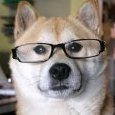
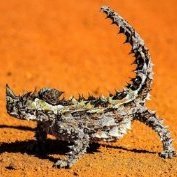

.thumb.jpg.5da8bff9741de420eb2e87addd8f2cf6.jpg)
